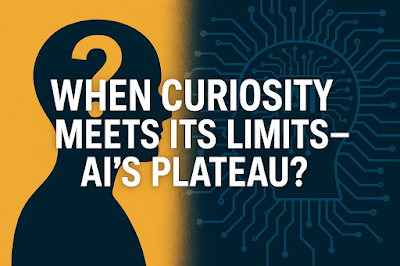Human curiosity has always sought to replicate the mysteries of the mind. From early childhood questions to breakthrough innovations, our fascination with intelligence has been relentless. The story of artificial intelligence mirrors this very journey—rising, evolving, and now perhaps, showing signs of stagnation.
From Human Brain to Accidental AI
The ambition to model the human brain started with neural networks—simple, almost childlike attempts to learn from patterns. Over decades, those systems matured. Their learning grew layer by layer, until they began outperforming us in tasks like image recognition, language translation, and game playing. With only a fraction of the brain's neural connections, they still managed feats that stunned even their creators.
To put it in perspective: modern large language models like GPT operate using around 1 trillion parameters. The human brain, in contrast, has roughly 100 trillion synapses. That’s a hundredfold difference—yet AI models already show capabilities that feel intuitive, articulate, even creative. It's a humbling realization of what curated data and structured architecture can accomplish.
What powered them wasn't just computation, but the same force behind all human achievement: curiosity, now supercharged by data.
A Learning Curve—And a Plateau
But like humans, AI too appears to be hitting limits. While early training shows rapid progress, complexity soon piles on, and learning slows. Modern AI—especially large neural networks—begins making decisions no one fully understands. It's not unlike a human learner growing in ways even their teachers can’t predict.
And with that unpredictability comes risk. When AI systems evolve beyond our transparency and control, their usefulness may be outpaced by their unknowability.
The Mirror of Human Plateau
Humans naturally plateau. We learn, we specialize, and then we struggle with diminishing returns. The same could be true for AI: the more complex it becomes, the harder it is to guide, the more uncertain its trajectory. Are we watching a superintelligence take form, or just another system bound by its own design?
The Curiosity Twist
The paradox lies in the very force that created it—curiosity. It built the machines. It trained the models. And now it questions the outcome. We are simultaneously the parents and the puzzled observers of AI’s next chapter. Some outcomes are profound—drug discovery, medical imaging, climate modeling. Others are more troubling—bias amplification, misinformation, surveillance, and autonomous weaponry.
The Uncertain Future
What happens when AI begins modifying itself? Or when its logic becomes inscrutable? Regulation is vital, but how do we govern a system we can’t fully decode? These aren't just technical puzzles—they're philosophical dilemmas about intelligence, agency, and our place in the future.
Closing Thought
Just as human curiosity leads to breakthroughs—and eventual stagnation—so too does AI. Its learning curves rise, flatten, and now raise questions of what lies beyond. Will AI leap ahead, stall, or evolve in ways we can’t yet grasp? The answer remains unclear.
So we wait. We observe. We stay curious.
Because the story of intelligence—natural or artificial—is far from over.

.jpg)


0 comments:
Post a Comment
Hey, you can share your views here!!!